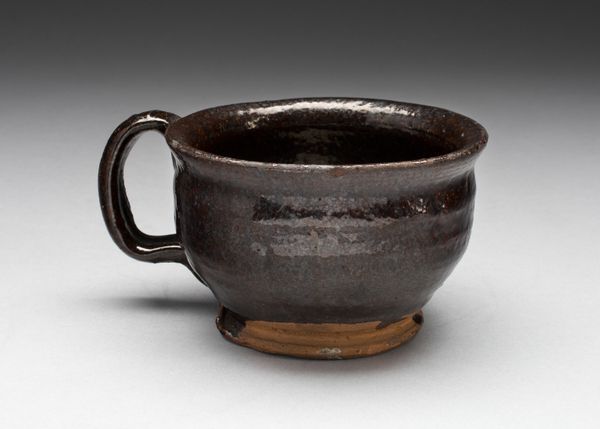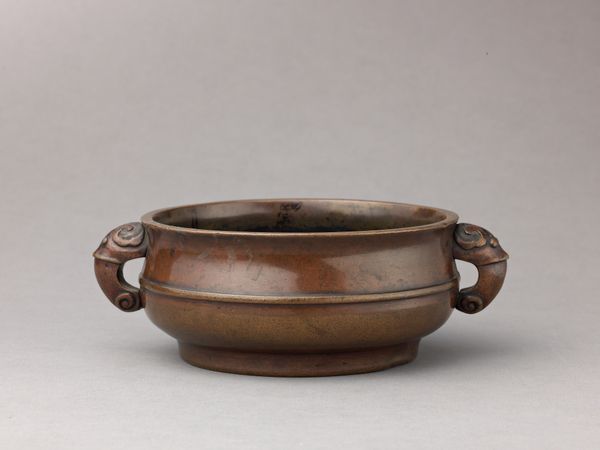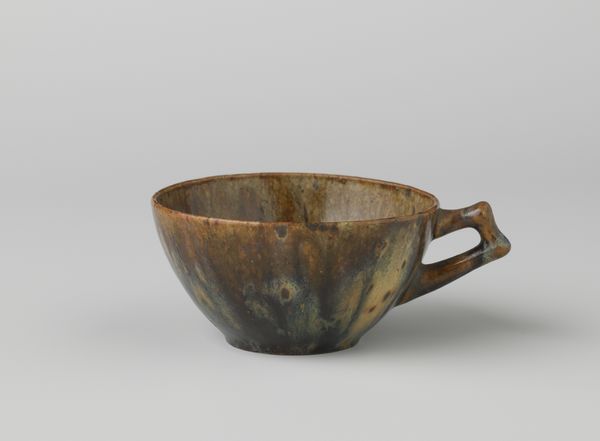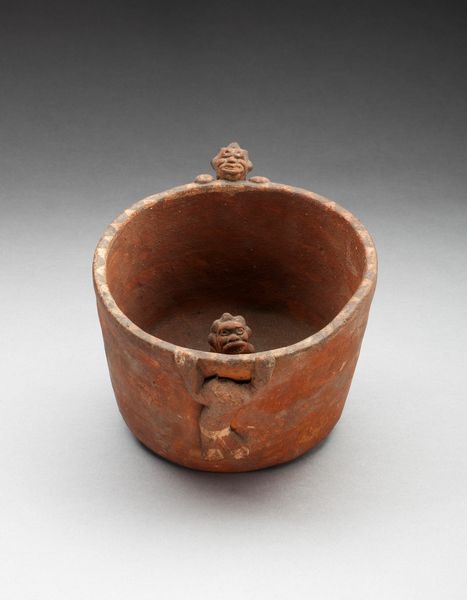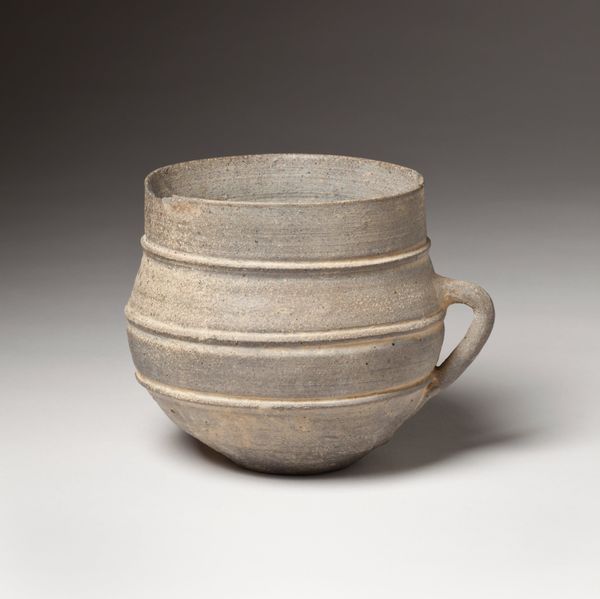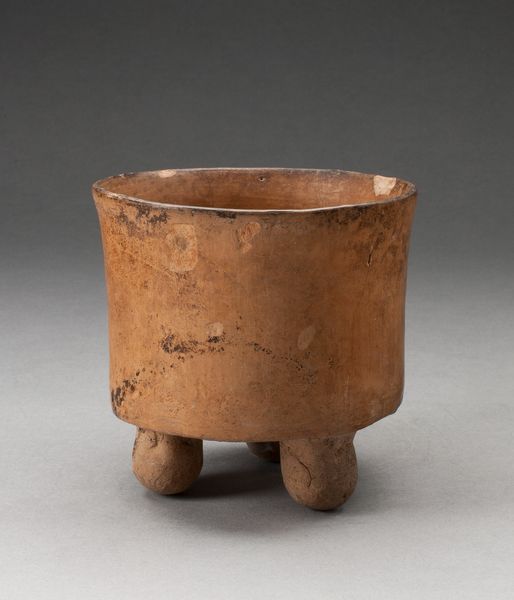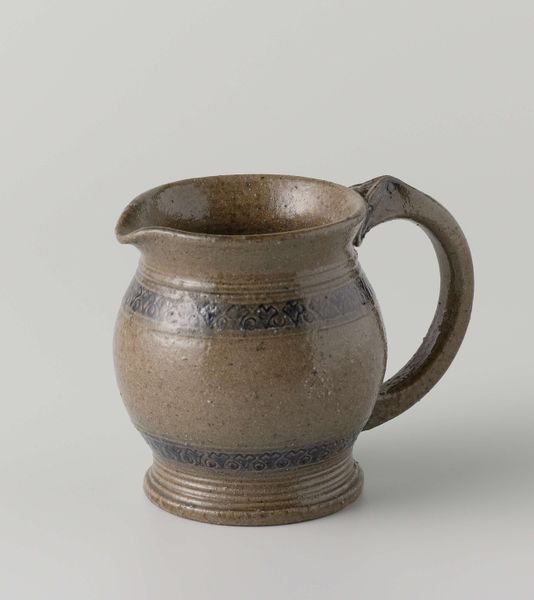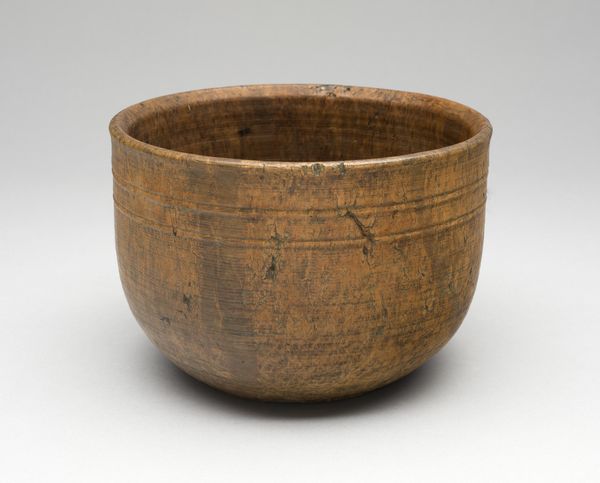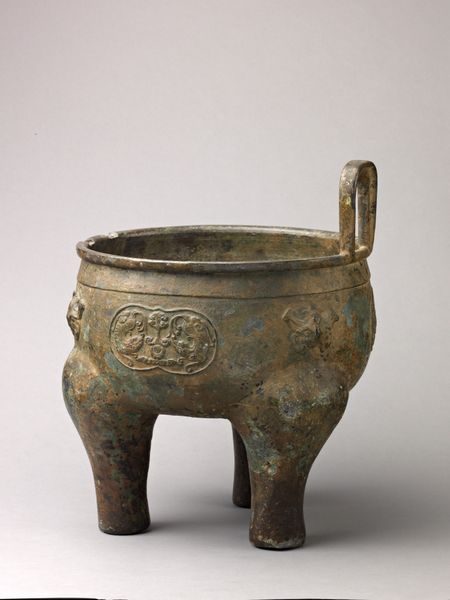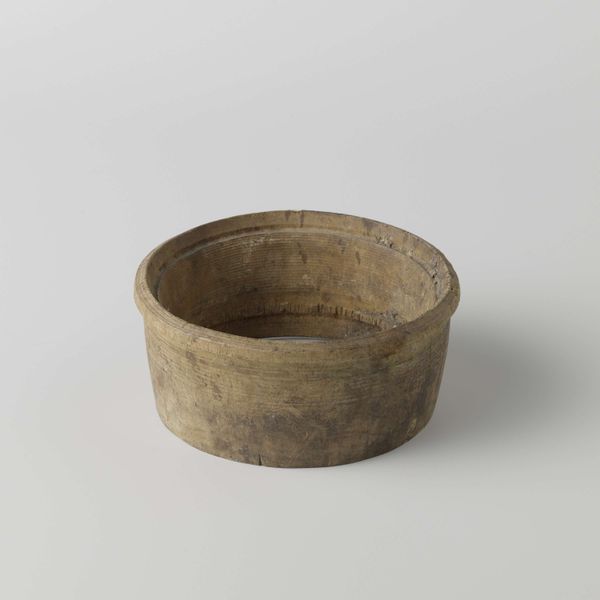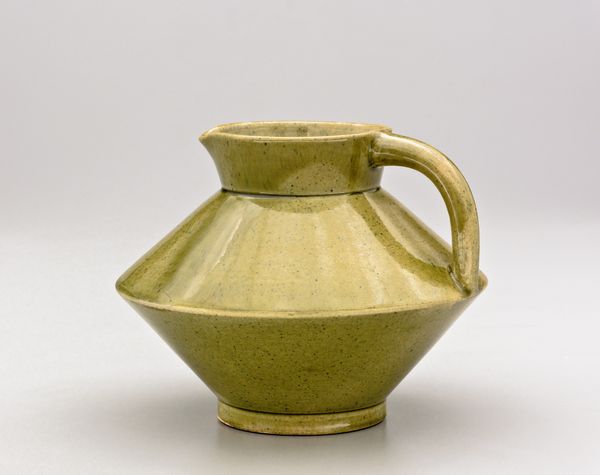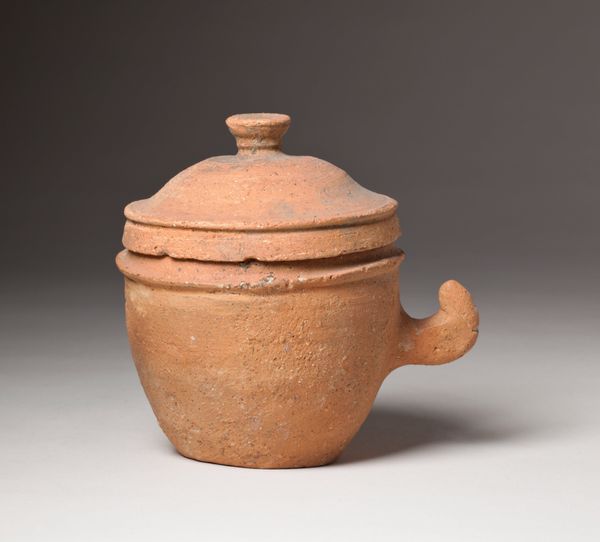
Square Cup with Molded Studs and Carved Inscription Possibly 1644 - 1911
0:00
0:00
drawing, carving, ceramic
#
drawing
#
carving
#
asian-art
#
ceramic
#
ceramic
#
calligraphy
Dimensions: 3.4 × 6.2 × 5.3 cm (1 5/16 × 2 7/16 × 2 1/16 in.)
Copyright: Public Domain
Curator: Looking at this, I am struck by its sturdiness, that square form offset by the ornate handle. The artist seemingly delighted in manipulating clay into unexpected forms. Editor: It is quite grounded, isn't it? Almost severe in its plainness yet softened by those whimsical stud decorations and the brushed calligraphy. There's a tension there that speaks volumes about the literati gaze versus practical use. Curator: Precisely. This is "Square Cup with Molded Studs and Carved Inscription", potentially dating between 1644 and 1911, currently housed at the Art Institute of Chicago. The creation of this small ceramic piece represents more than just the assembly of utilitarian material—it presents an exercise in craftsmanship where purpose is questioned. The studs—perfectly spaced but wholly unneeded. Editor: The object whispers tales of intellectual circles and the ritual of tea. I think about how these men engaged in discourse—what was deemed proper versus transgression of these very constructed social rules. To what extent were items such as this signaling subversive artistic positions? The earth tones and deliberate design give it weight that feels tied to the social status of its user. Curator: Yes, we also need to account for how such precious objects were produced and circulated during imperial regimes, and how these systems of patronage might’ve structured art making. Did this artisan enjoy their creative labor or was their effort exploited through the cultural elitism? We might read the simple carvings here in light of material inequalities. Editor: That inscription anchors our thoughts, certainly, but what does it suggest about who this object was supposed to serve? The visual language feels particularly steeped in tradition; I'd bet only certain readers, of a specific position, could comprehend the symbolic nuances imbued into it. What access did women and peasants, perhaps even marginalized craftsmen, have to interpret? Curator: It challenges our notions of cultural progress. Such beauty arising out of laborious methods asks about art-world access now. It brings into stark comparison the traditional role of skilled ceramicists versus contemporary craftmakers operating today. Editor: In these micro-histories embedded within something as apparently basic as a teacup, broader discussions occur. Materiality transforms into the historical, urging us think twice about the legacy inherited and biases reproduced within today’s museum context. Curator: True enough. In that regard it moves from object to conduit.
Comments
No comments
Be the first to comment and join the conversation on the ultimate creative platform.
